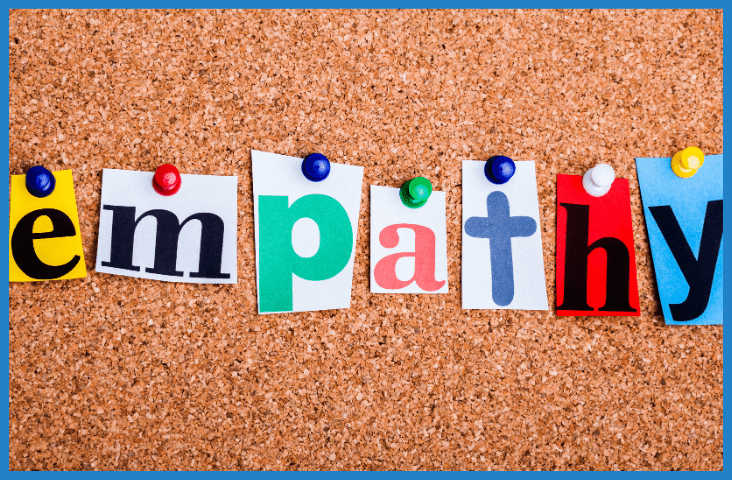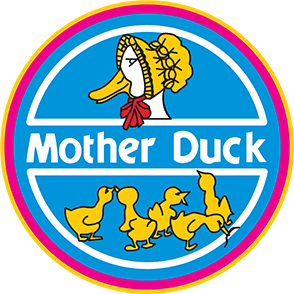
5 opportunities for teaching empathy in every day life
Empathy is a key component of emotional intelligence. It allows children to form positive relationships with others, helps them manage conflicts and even sets them up for success later in life. It is an essential life skill, and many parents I speak to are concerned with teaching this skill to their children.
However, there tends to be some confusion around how to teach empathy to children. Often, well-intentioned adults focus on pointing out a child’s wrongdoing in an attempt to better help them understand how their actions impact others. However, this strategy slips quickly into shame and blame and causes children to feel unsafe and unheard. Instead of empathy, it creates resentment and disconnection. It causes children to focus on how bad they feel, instead of how to help others.
If we want to teach children about empathy, we need to help them feel better, not worse. Children cannot offer understanding to others until they themselves feel understood.
What is empathy?
Empathy is the ability to understand and respond appropriately to the emotions and experiences of others. It has both a cognitive and an emotional component. Empathy is often thought of as a single skill, but it is actually a series of increasingly complex skills that develop gradually over time.
In order to display empathy children need to:
- Understand that they are separate from others and so experience different thoughts and feelings to them
- Recognise and label emotions in both themselves and others
- Regulate their own emotional and behavioural responses
- Imagine how someone else might feel by putting themselves “in their shoes”
- Think about and plan an appropriate, compassionate response based on their understanding of the situation.
These are complex skills. They develop gradually throughout childhood and continue to develop and become more refined all the way into adolescence and even adulthood. The ability to express empathy is affected by many things, including genetics, temperament, and early environment and experiences.

How does empathy develop?
Human beings are born hardwired for empathy. Even very young babies are able to attune to and respond to the emotions of their caregivers or other young infants. But this capacity for empathy needs to be nurtured and developed in children. And this occurs primarily within the context of a responsive, loving relationship with a caregiver. This is referred to as attachment, and the quality of early attachment greatly impacts an individual’s capacity for empathy as they grow.
Emotional empathy is the first component to develop, while cognitive empathy takes more time. For example, a toddler can understand that everyone has emotions and if it has been modelled for them, may even be able to offer a hug or some other type of comfort to a distressed friend. A preschooler is beginning to learn that everyone has different thoughts, feelings, and perspectives and is just beginning to understand how to see things from someone else’s point of view. And by around 6 or 7, thanks to maturing executive functioning skills, most children will be able to truly understand the experience of someone else and be able to regulate their own emotions and responses enough to offer a compassionate response based on that person’s experience.
Empathy and the parent-child relationship
A child’s ability to experience and express empathy is heavily influenced by their relationship with and attachment to their primary caregivers. Children learn what they experience themselves. Children cannot offer empathy to others when they have not received it themselves. They understand and develop these skills through their early positive interactions and emotional experiences with their parents.
And for this reason, we cannot use the parent-child relationship as a vessel to explicitly teach children empathy. We cannot use our own emotional experience to teach them about the impact of their actions on others. Because our relationship needs to remain a safe, secure base for our children. A relationship where they can freely express how they feel and who they are at all times, without worrying about whether or not we can handle it.
When we use phrases like, “When you kick me I feel sad”, we make children responsible for our emotions. We send the message that how we feel is more important than how they feel and that they should regulate their emotional responses in order to make us feel better. This does not develop empathy. Children who feel safe, secure, and seen are able to help others feel the same way. Children who do not feel safe, secure or seen, cannot feel empathy for others – they can only focus on getting their own needs met. So our primary goal when it comes to teaching our kids empathy – within our relationship with them – is simply to meet their needs as best we can.

How do we teach children empathy?
So if empathy skills need to be taught and nurtured, and we can’t use our own relationship with our kids to explicitly do this, what can we do instead? Well, there are actually many opportunities to teach and nurture these skills in our children. And most of them happen every single day. Here are 5 everyday scenarios that are great opportunities for teaching empathy to your kids.
A trip to the playground
Taking your child on a trip to the park or playground is a wonderful opportunity for a lesson or two in empathy. The playground can be a place of heightened emotions for little ones as they navigate social situations and learn new skills. You can use these situations to help your child understand the emotions of others and consider compassionate responses to the distress of their peers. Help your child to notice when other children are upset and encourage them to think about the reasons why too.
It sounds like this:
“That girl over there is crying. Do you think she feels sad because she fell down?”
Sibling arguments
Sibling relationships offer up great opportunities for practicing empathy. And arguments are especially useful teaching moments. Remember, the key to helping your child feel empathy is to first help them to feel understood themselves. So rather than focusing solely on the impact of your child’s actions on their sibling, try to first acknowledge how they may have been feeling that led them to react the way they did. Then, you can encourage them to make amends and repair the relationship as best they can. It’s very important that you avoid blaming or shaming language here (“How dare you hit your sister! You made her cry!”), as this will create resentment rather than empathy.
It sounds like this:
“You must have been so angry to lash out at your brother like that! How can you make amends/help him feel safe again?”
Playtime
Children will often act out situations in their play that reflect real-life situations they have experience with or are learning about. Play is a great chance for kids to practice new skills in a safe environment before using them in real life. Therefore, playtime is a great opportunity to teach kids empathy skills. And when we use play, we make it a fun learning experience for kids too! Look for opportunities within your child’s play for talking about emotions. If they are playing with dolls, ask your child how the dolls feel. Help them practice resolving conflict, taking turns, caring for babies and tending to sick patients. All of this builds empathy and helps kids understand the emotions and experiences of others.
It sounds like this:
“Dolly is feeling frustrated. If you were dolly, what would you do to help you calm down?”

Story time
Books are a super safe, super-effective way to help kids with empathy. Talk to your children about the emotions of the characters in their favourite books and help them link them to specific events. You can encourage further discussion by asking your child if they ever felt the same way. Ask them what helped them feel better when they felt that way and encourage them to think about how they would respond if they were in a similar situation. If they cannot think of any ideas themselves, you can make some suggestions and facilitate further discussion.
It sounds like this:
“The little boy in the book was feeling lonely because he had no one to play with. If you were there how could you help him?”
Setting Boundaries
Setting boundaries with empathy yourself is one of the most powerful ways you can teach your child empathy. Remember, empathy is learned primarily within the context of a loving, safe and accepting relationship. When we respond to our children with empathy and validate their emotions, we meet their needs for safety, connection, and acceptance. And when children feel safe, secure, and seen, they can offer empathy to others too. So when you need to set a boundary with your child, focus on the unmet need driving the behaviour. Acknowledge how they feel. And help them feel safe by avoiding shame and fear-based language and consequences. When they learn that they are still loved and accepted, even when they mess up and make mistakes, they will be able to offer the same compassion to others.
It sounds like this: “You’re really disappointed because mummy said no more cookies. I know it’s hard to hear no. I can’t let you hit my body.”

Above all, it’s important to remember that empathy is a complex set of skills that takes years to fully develop in children. Sometimes their capacity for empathy will astound us, and sometimes, well…it won’t. And that’s ok. They’re still growing and learning and we cannot rush the process before children are developmentally ready. But we can create a supportive, nurturing environment that sets them up for success, by responding to their needs with compassion and understanding and building a secure attachment with our children where they feel safe to express all emotions.
Sarah Conway is a child and adolescent psychologist, mother of 4, and founder of Mindful Little Minds. She has over 15 years of experience working in mental health with children, teenagers, and families. Sarah’s mission is to help parents move away from punitive parenting strategies and towards mindful, intentional parenting that builds emotional intelligence in kids and parents alike. As a busy mum herself, she knows firsthand how difficult mindful parenting can be, particularly when it was never modelled by our own parents. That’s why she provides parents and children with simple, practical strategies and tools that help them learn to manage emotions – together. She believes that changing the way we parent will change the world.


